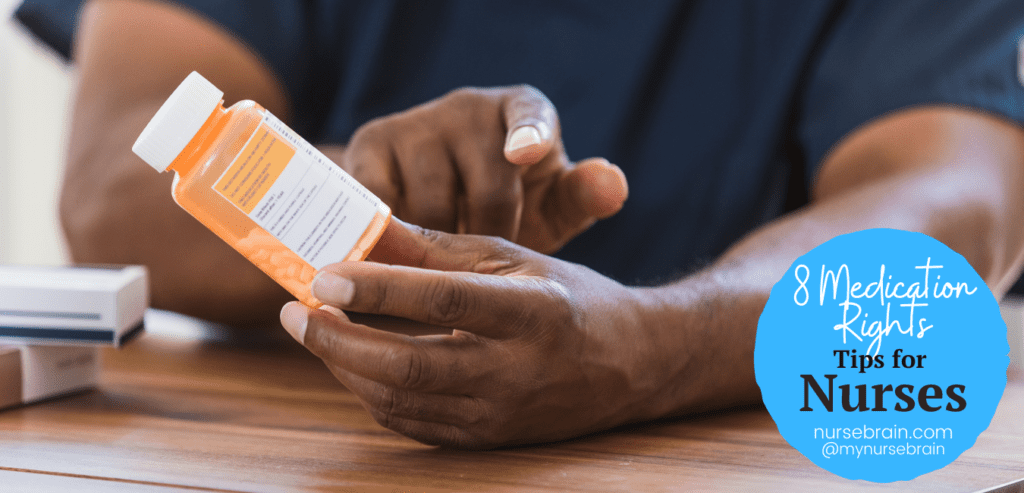Medication administration is one of the crucial responsibilities that a nurse has to fulfill. A nurse should be mindful of the 8 medication rights (previously 5) while administering medication to the patient. Following the 8 rights of medication administration leads to patient safety and patient safety is a nurse’s highest priority.
This article discusses the 8 rights that need to be followed to safely administer medication to your patients.
What are the 8 rights of medication?
The eight rights of medication are right patient, right medication, right dose, right route, right time, right documentation, right reason, and right response.
1. Right Patient:
Identify the patient by using at least 2 identifiers. These identifiers may be include their name, date of birth or medical record number (MRN). Ask the patient to verbally say his/ her name, date of birth and/or medical record number. Verify their patient identifiers with the information labeled on the medication you’re administering.
Example:
Nurse: “Hello, how are you? Can you please tell me your name and MR number so that I can give you medicine?”
Patient: “My name is Mr. John and MR no. 123-456-789.” (Right patient)
2. Right Medication:
As a nurse, you do not have the responsibility to prescribe the medication but you should have enough information related to the patient’s disease process and medications that are being prescribed. Your responsibility is to ensure that the given medication is correct. Verify the medication’s name on the label with the doctor’s order.
Example:
The nurse has confirmed the patient’s identity and now she verifies the medication’s name with the doctor’s order.
Nurse: “An injection of Tylenol 500mg/50ml is written on the medication label as well as on doctor’s prescribed orders.”
3. Right Dose:
If the dose is right, the medicine will work efficiently in the right way. If the dose is less, the medication will not work because the medication is not enough and if the dose is high, then the drug may have an adverse effects. Carefully inspect the medication and confirm that you are administering the right dose using the right measurement units. A nurse should be competent in drug dose calculation. In addition, if you have doubts about the dose ordered by the doctor, contact the prescribing doctor in order to seek clarification.
Example:
A 55-year-old female is admitted with the diagnosis of diabetes. She is on oral anti-diabetics. The doctor’s order is metformin 500mg TID. You have 250mg/tablet in hand. You calculate the dose and give her 2 tablets.
4. Right Route:
Check the doctor’s order and ensure that the patient is able to receive medication through the ordered route. Different routes of medication are absorbed differently and maybe ineffective or unsafe depending on the medication. Therefore, it is important to give a drug through the appropriate route.
Example:
You receive a patient from the operation room. She has pain 8/10. You have to administer a pain killer. You confirm from the doctor’s order that the medication dose is Tylenol 1000mg/100ml IV and that it needs to be given through the intravenous (IV) route.
5. Right Time:
Time of medication administration has its own importance. It includes checking the frequency of medication, checking when the last dose was given, and making sure that you are administering the drug at right time.
Example:
The doctor has suggested a medication that needs to be given QD which means once a day. The morning shift nurse gives the medication but forgets to document it. The night shift nurse administers the medicine again. This is a violation of the right “Right time” and a safety issue.
6. Right Documentation:
Documentation should be done after the medication is administered to ensure thoroughness and adherence to the plan of care. The nurse should also document the nursing considerations or interventions that need to be taken before administration of medicine. For example ,checking the patient’s vital signs especially blood pressure before giving antihypertensive drugs or checkin the patient’s blood sugar before administering insulin. Always document the time, dose, route, and frequency in a patient’s medical record accurately.
Example:
The doctor has prescribed the antihypertensive medication Atenolol 10 mg to patients with hypertension. The nurse gives the medication after checking the patient’s blood pressure and then documents that the medication was given after checking BP which was 140/90.
7. Right Reason:
This basically refers to knowing why the patient is taking the medication. It is the nurse’s responsibility to know the reason a medication is being prescribed. Knowing the reason why a medication is prescribed establishes trust between the patient and the nurse and helps the patient understand their plan of care. If the nurse is unsure about the reason a medication was prescribed, they can discuss it with a more experienced or knowledgeable nurse, a pharmacist or the prescribing physician.
Example:
A novice nurse is confused as to why heparin is being administered to her patient. The nurse decides to ask the doctor for clarification. The doctor explains to her that the patient is bedridden and heparin will prevent deep venous thrombosis (DVT).
8. Right Response:
Right response refers to the achievement of the desired effect and positive patient response. Check whether the given medicine is working the way it should work.
Example:
Going back to the example of the hypertensive patient. After administering the ordered hypertensive, the nurse rechecks the blood pressure an hour later (per her department’s policy) to make sure that the blood pressure has dropped to an acceptable range. Upon rechecking, the patient’s blood pressure reading is 122/75. She documents the new reading and proceeds with her remaining tasks.
What is a Medication Error?
Failure to adhere to these medication administration rights can result in medication errors. According to the National Coordinating Council for Medication Error Reporting and Prevention, a medication error is defined as “any preventable event that may cause or lead to inappropriate medication use or patient harm while the medication is in the control of the healthcare professional, patient, or consumer.” Medication errors can cause patients to experience adverse effects/events as a result of not being able to tolerate the wrong medication or the wrong dose of medication.
Common causes of medication errors:
Common causes of medication errors include lack of skilled and knowledgeable health care professionals, lack of assertiveness by the nurse (for example, being to afraid to speak up about an order that does not make sense), lack of open communication, lack of responsibility, and risk-taking behaviors such as documenting a medication that has not yet been administered.
How to prevent medication errors and take care of patient rights of medication?
Clear and open communication:
Communication between healthcare providers should be clear. They should be able to clarify any misunderstanding openly without being intimidated or afraid.
Prepare by self, administer by self:
If you have prepared the medication, you are the right person to administer that medication. Don’t hand over the administration to other staff as this may result in the wrong administration of the medication.
Label medication:
Label the syringes, IV meds, and even oral medicine (container). The label should include the patient’s name, MRN, medication name, dose, and route of administration. Labeling prevents the errors caused by look-alike and sound-alike medications.
Get back to check the medication response:
If you have administered medication, go back after some time to check the patient’s response. For example, if you administered medication for pain, go back to the patient and perform a pain assessment. If you have administered a sleep medication such as melatonin, return to see if the patient is indeed sleeping.
Work as a team:
As mentioned above, have open communication and work as a team. Ask questions and give answers, listen to opinions and respect each other.
Listen to intuition:
If you are doubtful about any drug, dose, route, or frequency, ask the doctor again and refer to reliable source. If you feel unsure about a patient identity, you can clarify with them by asking for their name and date of birth.
By adhering to the 8 rights of medication administration, you will be able to provide safe competent care to your patients. Subscribe to our newsletter and follow us on social media for more helpful nursing content!


